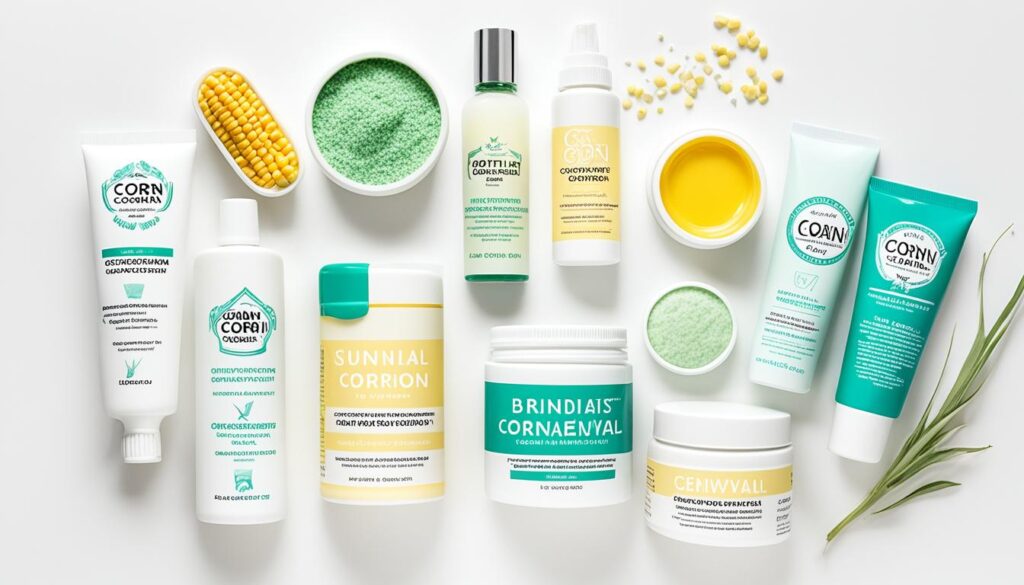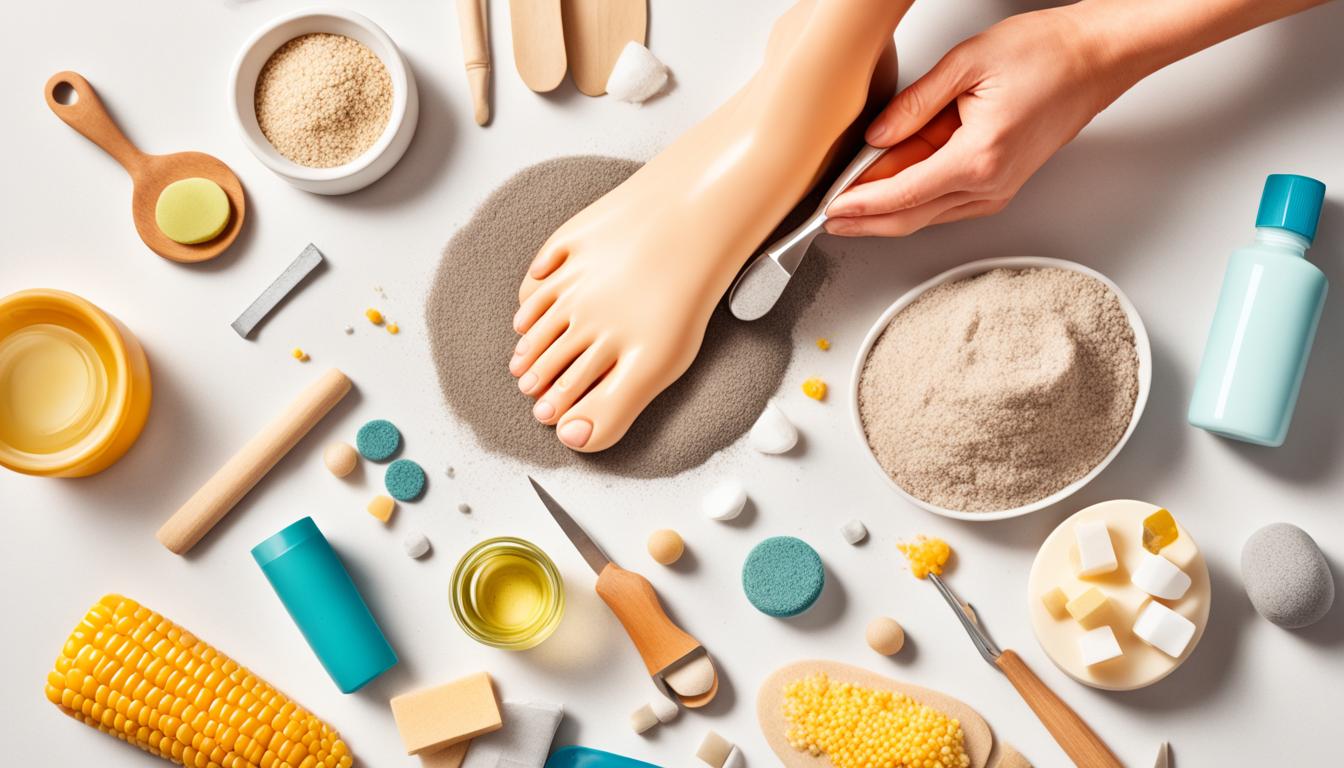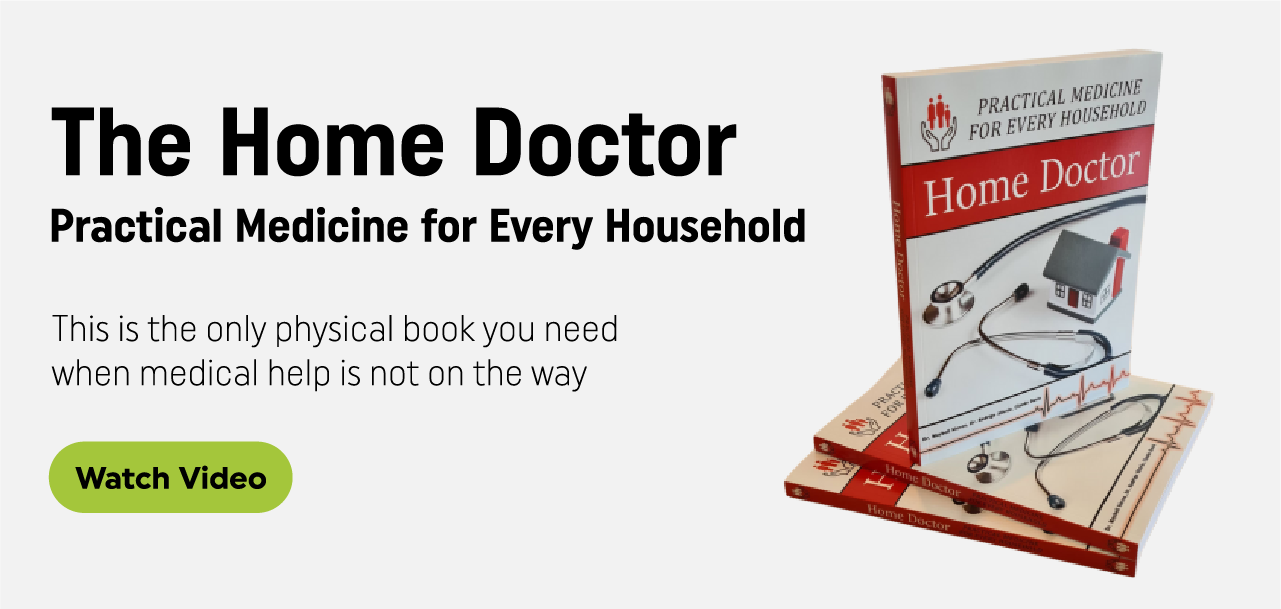Corns, those hardened layers of skin that develop from friction, can be a painful annoyance. Whether you’re dealing with a corn on your toes, feet, or hands, finding effective ways to remove them is essential for your comfort and wellbeing. In this comprehensive guide, we will explore various methods for DIY deep corn removal at home using natural remedies and over-the-counter products. We’ll also discuss when it’s necessary to seek medical advice and surgical options for corn removal.
Key Takeaways:
- There are several DIY methods for deep corn removal at home using natural remedies.
- Over-the-counter products like pumice stones and moisturizing lotions can also help eliminate corns.
- If home remedies and over-the-counter treatments don’t work, it may be necessary to seek medical advice.
- Surgical options, such as corn removal surgery and cortisone injections, are available for more severe cases.
- Proper aftercare and hygiene are crucial for successful recovery after corn removal.
Understanding Corns and Their Causes
Corns are a common foot condition characterized by hardened skin that develops as a result of friction. They often appear on the toes, soles, or sides of the feet, causing discomfort and pain. To effectively treat corns, it’s important to understand their causes and take appropriate measures to prevent their formation.
What are Corns?
Corns, also known as helomas, are small areas of thickened and hardened skin that typically form in response to repeated friction or pressure. They can develop due to various factors, such as wearing ill-fitting shoes, engaging in activities that put excessive pressure on the feet, or having certain foot deformities.
Causes of Corns
The primary cause of corns is friction. When there is constant rubbing or pressure on a specific area of the foot, the skin responds by thickening and hardening to protect itself. This is the body’s natural defense mechanism against the constant irritation.
Poorly fitting shoes are a common culprit behind corn development. Shoes that are too tight or have inadequate cushioning can create excessive pressure points and increase the chances of friction-related corns.
Other factors that can contribute to the formation of corns include:
- Foot abnormalities, such as hammertoes or bunions, which can cause additional pressure and friction on certain areas.
- High-impact activities or occupations that involve prolonged standing or walking, increasing the likelihood of friction and pressure on the feet.
- Wearing high heels or shoes with narrow toe boxes, which squeeze the toes together and create friction.
- Abnormal gait or walking patterns that lead to uneven distribution of weight and pressure on the feet.
- Age-related changes in foot structure and skin elasticity, making older individuals more susceptible to corns.
Preventing Corns
To prevent the development of corns, it is crucial to address the underlying causes of friction and pressure on the feet. This can be achieved by:
- Wearing well-fitted shoes with adequate cushioning and toe room.
- Choosing shoes made from breathable materials that reduce heat and moisture buildup.
- Using protective padding, such as gel or foam cushions, to alleviate pressure points.
- Practicing good foot hygiene, including regular washing and moisturizing to keep the skin supple.
- Trimming toenails properly to avoid ingrown nails and reduce the risk of corns.
- Seeking prompt treatment for any foot abnormalities or deformities.
By taking proactive measures to minimize friction and pressure on the feet, it is possible to prevent corns from developing. However, if corns do occur, various treatment options are available to alleviate discomfort and promote healing.
Home Remedies for Corn Removal
If you’re looking for natural remedies for corns, there are several home remedies that can be effective for corn removal. These remedies can help alleviate the discomfort caused by corns and promote healing.
1. Change to Shoes That Don’t Cause Friction
One of the first steps in treating corns at home is to address the root cause. **Changing to shoes** that do not cause friction or pressure on the affected areas can help prevent the formation of new corns and allow existing corns to heal.
2. Trim Toenails Properly
**Trimming your toenails** correctly is essential for corn prevention and removal. Cutting your toenails straight across and avoiding rounded edges can prevent the nails from digging into the surrounding skin, reducing the risk of corns.
3. Soak the Corn in Warm Water and Use a Pumice Stone
**Soaking the corn in warm water** for about 10-15 minutes before gently using a pumice stone to remove dead skin can help soften the corn and make it easier to remove. Remember to be gentle and avoid excessive pressure, as this can cause irritation.
Tip: Ensure that the pumice stone is clean and sanitized before each use to reduce the risk of infection.
4. Apply Moisturizing Lotions or Creams
**Applying moisturizing lotions or creams** with ingredients like urea or salicylic acid can gradually soften the hardened skin and help in the corn removal process. These ingredients have keratolytic properties that aid in the breakdown of dead skin cells.
5. Use Foot Padding and Insoles in Your Shoes
**Foot padding** and **insoles** can provide cushioning and support to relieve pressure on the corn and reduce discomfort. They can also help distribute weight more evenly, preventing further friction and corn formation.
6. Consider Surgical Options and Cortisone Injections
If home remedies do not effectively remove the corn or alleviate symptoms, it may be necessary to consider **surgical options** or **cortisone injections**. A podiatrist can evaluate your specific case and provide appropriate recommendations based on the severity and persistence of the corn.
Keep in mind that surgical options and cortisone injections are typically reserved for more severe cases and should only be considered under the guidance of a healthcare professional.

By incorporating these home remedies into your corn removal routine, you can take a natural and holistic approach to addressing corns. Remember to be patient and consistent with these remedies, as it may take some time for noticeable improvements to occur.
Over-the-Counter Products for Corn Removal
While home remedies can be effective, there are also a variety of over-the-counter products available for corn removal. These products are designed to provide relief and help eliminate the discomfort caused by corns. Here are some popular options:
Pumice Stone
One of the most common tools for corn removal is a pumice stone. This natural stone is specially designed to gently file away dead skin and calluses. To use a pumice stone for corn removal, it is recommended to soak the affected area in warm water for a few minutes to soften the skin. Then, gently rub the pumice stone in a circular motion over the corn to remove the dead skin. Remember to be gentle and avoid excessive rubbing to prevent irritation or injury to the healthy skin surrounding the corn.
Moisturizing Lotions or Creams
To gradually soften a hard corn, moisturizing lotions or creams with keratolytics can be applied. These products work by promoting the shedding of dead skin cells and increasing skin hydration. Regular application of these moisturizing products can help reduce the thickness of the corn and make it easier to remove. It’s important to choose a lotion or cream specifically formulated for corn removal and follow the recommended usage instructions.
Foot Padding
Using foot padding is another effective way to relieve discomfort caused by corns. This can include cushioned pads or inserts that provide additional support and cushioning to the affected area. Foot padding helps to reduce pressure and friction, allowing the corn to heal and preventing further irritation. It’s important to choose foot padding that is specifically designed for corns and ensure it fits comfortably inside your shoes.

These over-the-counter products can be used in combination with home remedies to enhance the effectiveness of corn removal. However, it’s important to note that severe or persistent corns may require medical intervention. If your corns do not improve or if you experience severe pain or infection, it is recommended to consult a healthcare professional for further evaluation and treatment.
| Product | Description |
|---|---|
| Pumice stone | A natural stone used for gently filing away dead skin and calluses. |
| Moisturizing lotions or creams | Contains keratolytics to promote the shedding of dead skin cells and increase skin hydration. |
| Foot padding | Cushioned pads or inserts that provide additional support and cushioning to the affected area. |
Surgical Options for Corn Removal
In cases where conservative treatments fail, surgical options may be considered for corn removal. These surgical options provide more aggressive and effective approaches to eliminate stubborn corns. The choice of surgical intervention depends on the severity of the corn and the underlying causes.
Corn Removal Surgery
Corn removal surgery is a common surgical option used to address corns that have not responded to less invasive treatments. During the procedure, the surgeon uses a surgical blade to precisely shape the dead skin down to the root of the corn. This technique ensures the complete removal of the corn, eliminating the source of discomfort and reducing the likelihood of the corn recurring.
Additional Surgery for Underlying Mechanical Stressors
In some cases, corns may develop due to underlying mechanical stressors, such as bone deformities or abnormal foot structure. In such situations, additional surgical procedures may be necessary to correct the underlying issues. The surgeon can address bone spurs, bunions, or other structural abnormalities to alleviate the pressure causing the corns.
Cortisone Injections
For corns that are accompanied by significant pain and inflammation, cortisone injections may be recommended. These injections deliver corticosteroids directly to the affected area, reducing inflammation and alleviating pain. This treatment can provide temporary relief while other interventions are being pursued.
Podiatrist Shaving with a Surgical Blade
Another surgical option for corn removal is having a podiatrist shave the corn using a surgical blade. This procedure involves carefully removing layers of dead skin to reduce the size and discomfort of the corn. It is important to seek a qualified and experienced podiatrist to perform this procedure to ensure optimal results.
In severe cases, a combination of these surgical options may be necessary to effectively target and eliminate the corns. Consulting with a podiatrist or foot specialist will help determine the most appropriate surgical approach based on the individual’s specific condition and needs.
Recovery and Aftercare for Corn Removal Surgery
If corn removal surgery is necessary, proper recovery and aftercare are crucial for a successful outcome. Following these steps diligently can promote healing and minimize complications.
- Ice and elevation: To reduce swelling and alleviate pain, apply ice packs to the surgical area for 15-20 minutes every 2-3 hours. Elevating the foot above heart level can also help with fluid drainage.
- Surgical shoe: Your healthcare provider may prescribe a surgical shoe to protect the surgical site and provide stability during the healing process. It is important to wear the shoe as directed to avoid putting unnecessary pressure on the foot.
- Keeping the affected area and dressing dry: It is essential to keep the surgical area clean and dry to prevent infection. Follow the healthcare provider’s instructions on changing the dressing and keeping the area dry during bathing or showering.
- Removal of stitches: Typically, stitches or sutures are used to close the incision after corn removal surgery. You will need to schedule a follow-up appointment with your healthcare provider to have the stitches removed at the appropriate time.
- Limiting activity: During the recovery period, it is important to limit activities that can strain the surgical area. Avoid walking or standing for long periods, engaging in strenuous exercise, or putting undue pressure on the foot.
- Proper foot hygiene: Maintaining good foot hygiene is essential to reduce the risk of infection. Clean the surgical area gently with mild soap and water, pat it dry, and apply any prescribed ointments or creams as directed.
By following these post-operative instructions and caring for your foot diligently, you can support the healing process and minimize any potential complications. Be sure to reach out to your healthcare provider if you have any concerns or if you notice any signs of infection, such as increased pain, redness, swelling, or discharge from the surgical site.
When to Seek Medical Advice for Corns
Mild corns can often be managed at home with various remedies and treatments. However, it is crucial to seek medical advice in certain situations to ensure proper care and management of corns, especially if symptoms become severe or if they interfere with your daily activities. Seeking medical advice is also important for individuals with chronic conditions like diabetes, as they may require specialized treatment and care.
If you experience **severe symptoms** such as intense pain, swelling, or infection associated with your corns, it is essential to consult a healthcare professional. These symptoms may indicate a more serious underlying issue or an infection that needs immediate attention.
Individuals with **chronic conditions**, such as **diabetes**, should also seek medical advice for corn-related issues. Diabetes can affect blood circulation and increase the risk of foot complications, making it crucial to have your corns monitored by a healthcare professional to prevent any potential complications.
Furthermore, if home remedies and over-the-counter treatments have not provided sufficient relief or improvement in your corn symptoms, it is advisable to schedule an appointment with a healthcare provider. They can evaluate your condition, provide a proper diagnosis, and recommend appropriate treatment options tailored to your specific needs.
In summary, while mild corns can often be managed at home, it is important to seek medical advice if your symptoms are severe, interfere with daily activities, or if you have a chronic condition like diabetes. Consulting a healthcare professional can help ensure effective management of your corns and minimize any potential complications.
Conclusion
Corn removal can be effectively achieved through a variety of methods, including home remedies, over-the-counter products, and surgical options. By understanding the causes of corns and seeking medical advice if necessary, you can successfully remove corns and find relief from associated discomfort.
Home remedies such as changing to proper-fitting shoes, trimming toenails correctly, and using a pumice stone can help alleviate corns. Over-the-counter products like moisturizing lotions and foot padding can also provide relief. However, if symptoms are severe or if you have a chronic condition, it’s important to consult with a healthcare professional for medical advice.
Whether you choose to try home remedies, over-the-counter products, or opt for surgical options, the key to effective corn removal lies in finding the right treatment approach for your specific situation. By taking the appropriate steps, you can achieve effective corn removal and improve your overall foot health.


